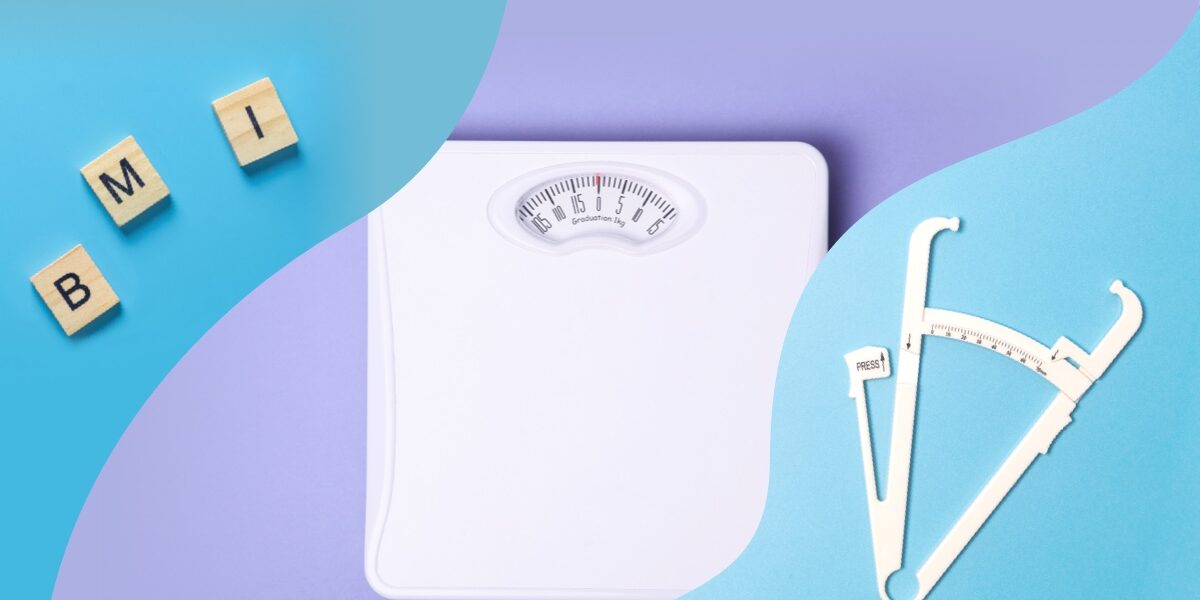BMI, scale or body fat percentage—what’s best?
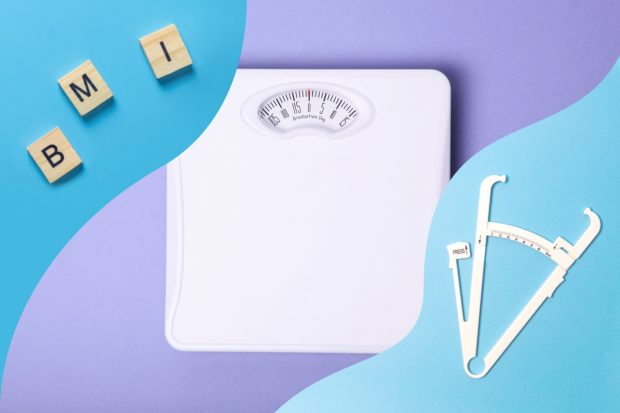
Your pants are looser, you’re receiving compliments left and right and you’re finally seeing definition in your arms. But that damn scale isn’t budging and your BMI makes it sound like you’re obese. And while you know you’re looking and feeling great, what the hell’s going on? Here’s the lowdown.
BMI Is Based on a Lie
Body mass index (BMI) is a simple calculation based on your height and weight to estimate a “healthy” body weight. According to the calculation, a BMI below 18.5 is considered “underweight,” 18.5 to 24.9 is considered “healthy,” 25 to 29.9 is considered “overweight” and 30 to 39.9 falls under the “obese” range.
But the problem with BMI is that it doesn’t distinguish between fat and muscle. It basically only tells you how heavy you are. One of the most famous examples of BMI-gone-wrong is Arnold Schwarzenegger. When the former California Governor was in his prime, he had a BMI of 31…and we all know he was far from obese!
On the flip side, BMI is sometimes a false indicator of health. Just because you fall into the “normal” BMI range—18.5 to 24.9—you can still have a high body fat percentage, which increases your risk of cardiovascular disease and other health issues.
Therefore, weight and BMI aren’t the best tools at measuring your progress, especially since changes in body composition may not budge the scale.
The important lesson here is that muscle takes up more space than fat. Simply put, the more muscle you have, the more potential for your weight and BMI to move upward, making it look like you’re overweight when you’re actually not!
So, ignore the BMI (and the scale) and focus on your body fat percentage instead.
Related: Why Am I Not Losing Weight Despite Working Out Regularly?
What Is Body Fat Percentage?
Simply put, body fat is the amount of fat in your body in relation to the rest of your body:
- Muscle
- Bone
- Organs
- Tendons
- Water
What’s a Healthy Body Fat Percentage for Women?
Physiologically speaking, women need more essential body fat—the minimal amount of body fat for survival—than men for insulation, the protection of internal organs, vitamin storage and hormone regulation to promote a healthy pregnancy.
While less body fat may seem optimal, a dangerously low body fat percentage has some severe consequences for women of any age, including:
- Amenorrhea (the absence of periods)
- Infertility
- Weakened immune system
- A disordered metabolism
- Memory problems
- Inability to focus
On the other hand, a dangerously high body fat percentage has some severe consequences for women as well, including:
- Heart disease
- High blood pressure
- Type 2 diabetes
- Gallstones
- Trouble breathing
- Sleep apnea
- Cancer
Many things change with age and body fat is no exception. Ideal body fat percentages for women by age group are listed below:
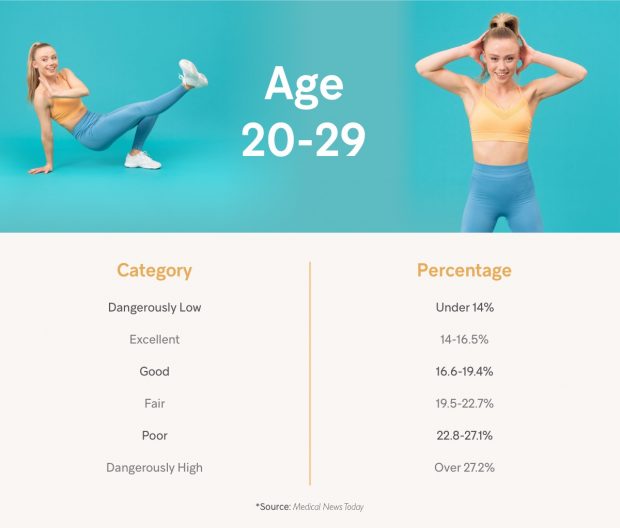
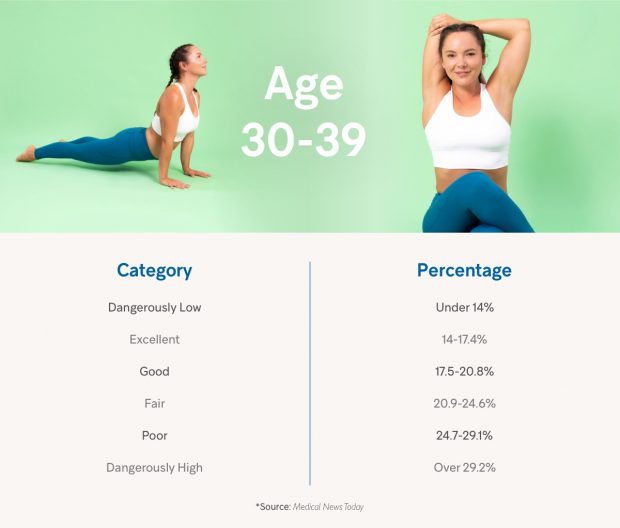
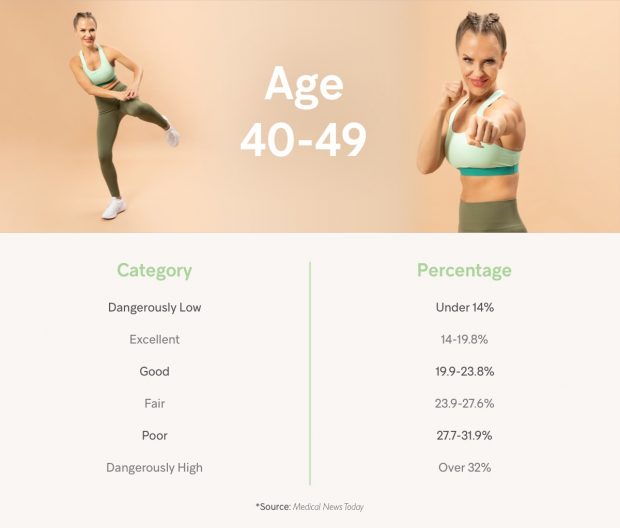
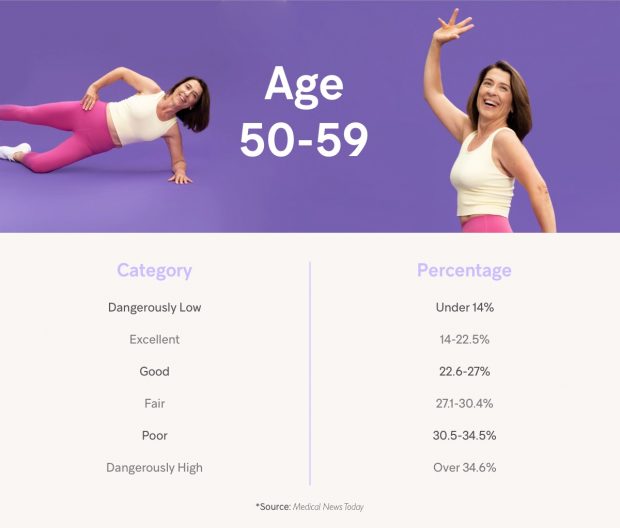
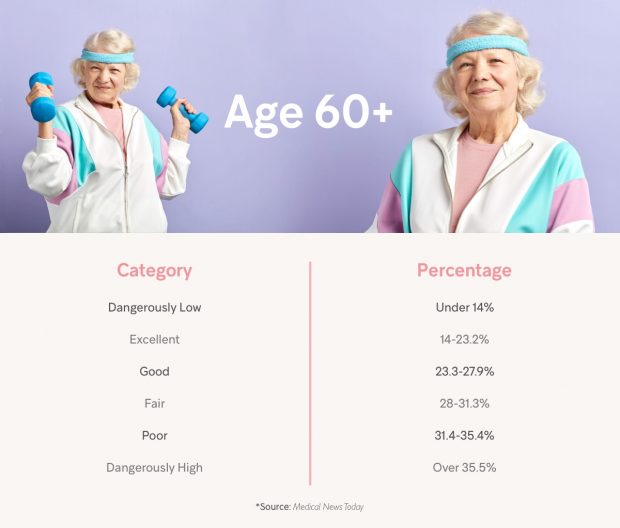
How Do You Measure Your Body Fat Percentage?
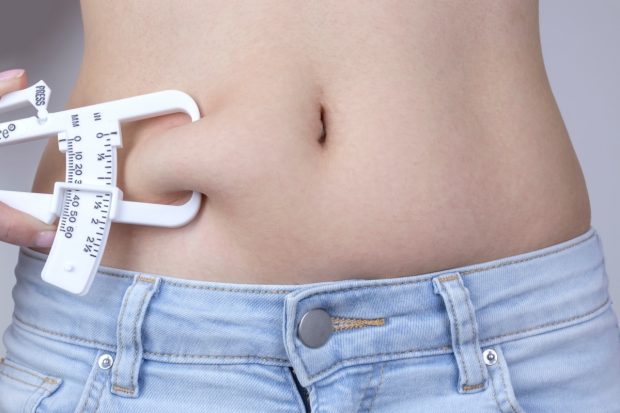
Skinfold Calipers: Surprisingly accurate for how cheap they are. Pull the fat away from your muscles from multiple body regions—the back of your dominant arm (triceps), the abdominal region above your hip bone and your dominant thigh (frontal), at the midpoint between your knee and hip.
While accuracy is important, it’s not as important as the fact that you need to pinch and measure the same area under the same conditions consistently each week to track your overall progress. Make sure to record your measurements from each body region and compare over time.
The Bod Pod: Uses air displacement to measure your body mass, volume and density. It’s quite accurate, but is pretty darn expensive, costing around $75 per session.
Hydrostatic Testing (Underwater Weighing): Usually conducted at research institutions and universities, underwater weighing is the gold standard when it comes to measuring body fat percentage. TBH, it’s expensive, tedious and a huge pain in the arse. But, by all means, if you have the resources, you’ll get an extremely accurate reading (within 1-3%).
What’s the Best Way to Lower Body Fat Percentage?
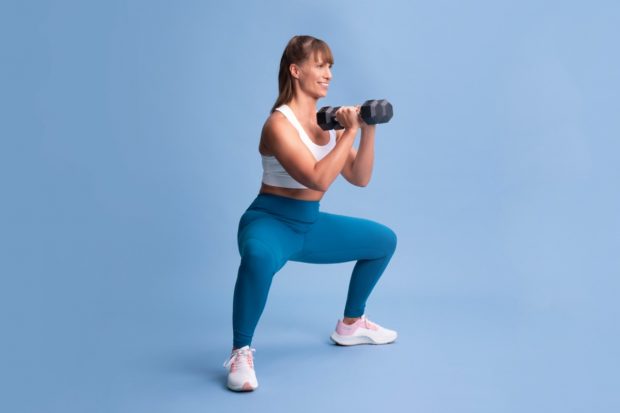
- Eat a caloric deficit. Consume fewer calories than you burn on a consistent basis.
- Lift weights. Add strength training to your routine to build lean muscle and increase your metabolism to help burn fat. Due to the metabolic effects associated with strength training, you’ll burn extra calories long after your workout is over, a phenomenon known as the “afterburn effect.”
- Consume more protein. Complete protein sources contain all 9 essential amino acids that your body needs to build lean muscle, so eat up. Plus, protein makes you feel fuller for longer periods of time, which is great for diminishing cravings.
- Consider intermittent fasting. Try strength training first thing in the morning in a fasted state before consuming your first meal of the day. Additionally, try to refrain from eating late at night, so your body has time to burn more calories before bed. According to research, a window between 10:00 and 18:00 has shown high success rates.
- Incorporate anaerobic activity into your routine. Anaerobic activities are defined as short bursts of energy that are independent of oxygen—think sprinting, jumping or heavy weight lifting. Because anaerobic exercise uses a fast-acting energy pathway called the phosphagen system, you create a similar afterburn effect as strength training, so you’ll continue to burn calories long after your workout is over.
Final Thoughts
Instead of being so focused on losing fat, hone in on how you feel. Remember that EVERYBODY and EVERY BODY is different and responds differently to exercise programs and nutrition plans. What works for some might not work for you. Integrating healthy habits into your everyday life and being consistent in your pursuits are the keys to your success!
We believe in a holistic approach to your health and fitness—helping you to reach your goals in a healthy and sustainable way. Start your free trial with Gymondo today and explore a huge variety of workouts and recipes made with you in mind.

